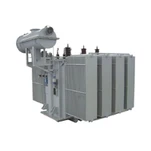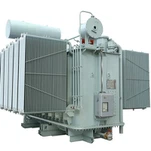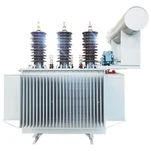On-load tap changers (OLTC) are crucial components of power transformers, enabling real-time voltage adjustments under load conditions. Due to their importance in maintaining the stability of electrical grids, thorough testing of OLTCs is essential to ensure their reliability and efficiency. This article provides an overview of the testing processes for OLTCs.
Purpose of OLTC Testing
OLTC testing aims to:
Verify operational reliability and performance.
Identify potential faults or wear in mechanical and electrical components.
Ensure compliance with industry standards and specifications.
Key Tests for OLTCs
Visual Inspection:
Objective: Assess the physical condition of the OLTC components, including the diverter switch, tap selector, transition resistors, and insulating materials.
Procedure: Inspect for signs of wear, corrosion, overheating, or contamination. Check the tightness of connections and the integrity of insulation.
Contact Resistance Measurement:
Objective: Measure the resistance of OLTC contacts to detect high-resistance connections caused by wear or dirt.
Procedure: Use a micro-ohmmeter to measure the resistance of each tap position. Compare the results to specified limits.
Dynamic Resistance Measurement (DRM):
Objective: Evaluate the switching operation of the OLTC during tap changes by observing resistance changes over time.
Procedure: Monitor the resistance curve during switching to detect abnormalities, such as contact bounce or delayed operations.
Operation Timing Test:
Objective: Assess the time taken for the OLTC to switch between tap positions.
Procedure: Measure the switching time using specialized test equipment and verify it against manufacturer specifications.
Insulation Resistance Test:
Objective: Ensure the insulation between different parts of the OLTC is intact and effective.
Procedure: Apply a high voltage across insulating components and measure the resistance using an insulation resistance tester.
Oil Analysis (for Oil-Filled OLTCs):
Objective: Assess the condition of the insulating oil, which can indicate internal problems.
Procedure: Test the oil for dielectric strength, moisture content, and the presence of dissolved gases using dissolved gas analysis (DGA).
Acoustic and Vibration Analysis:
Objective: Detect irregularities in mechanical operations during tap changes.
Procedure: Use acoustic sensors and vibration monitors to capture and analyze the sound and vibration patterns of the OLTC.
Advanced Testing Techniques
Thermal Imaging: Identify hot spots caused by poor connections or excessive friction.
Partial Discharge Testing: Detect early signs of insulation degradation.
Control Circuit Testing: Verify the functionality of OLTC control systems, including relays and sensors.
Maintenance Recommendations Based on Test Results
Perform cleaning, lubrication, or replacement of components as needed.
Address any high-resistance contacts or abnormal timing issues.
Replace or filter oil if tests reveal degradation.
Conclusion
Regular and comprehensive testing of on-load tap changers is vital for maintaining transformer performance and prolonging equipment life. By identifying and addressing issues early, power utilities can ensure reliable operation and prevent costly failures.










